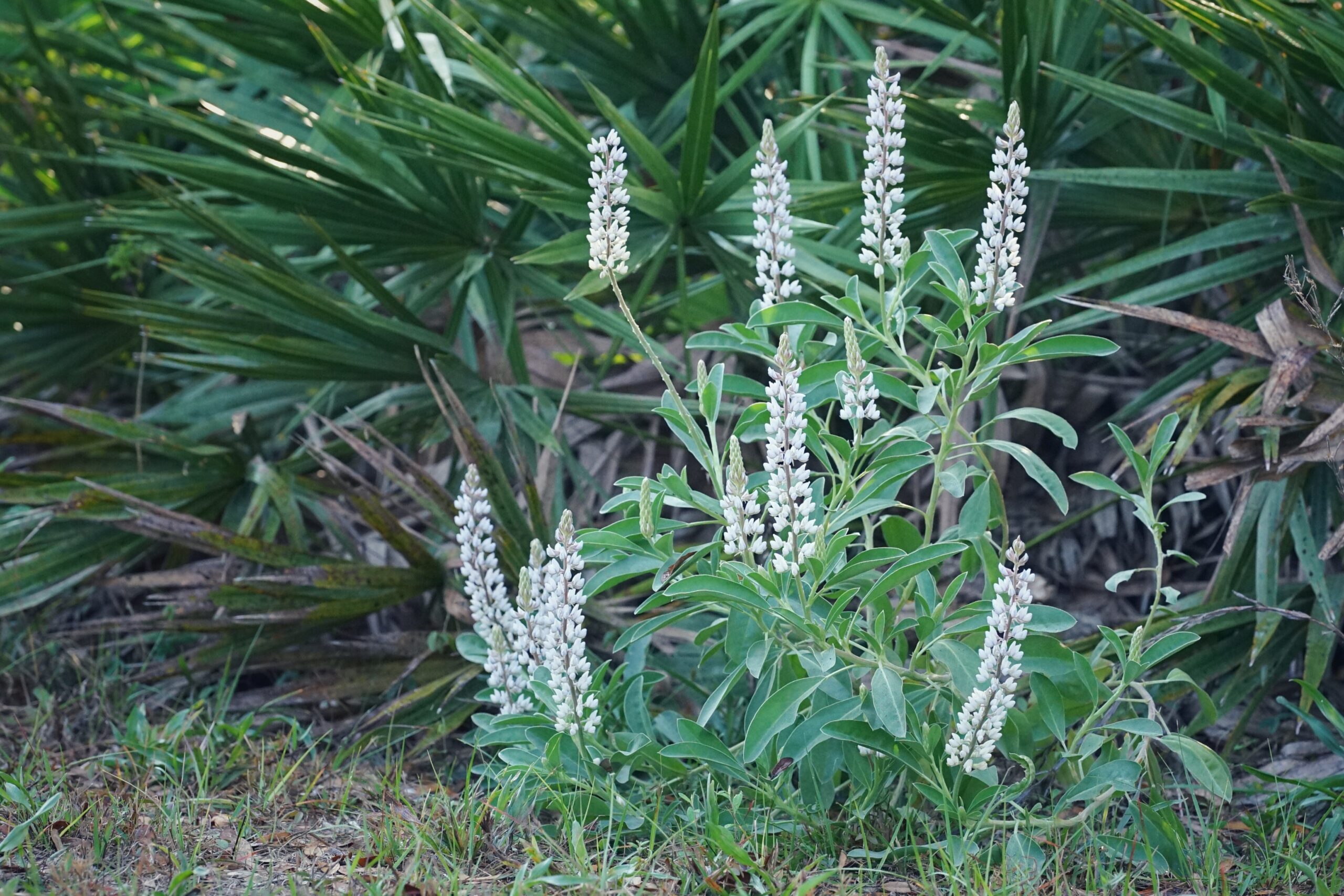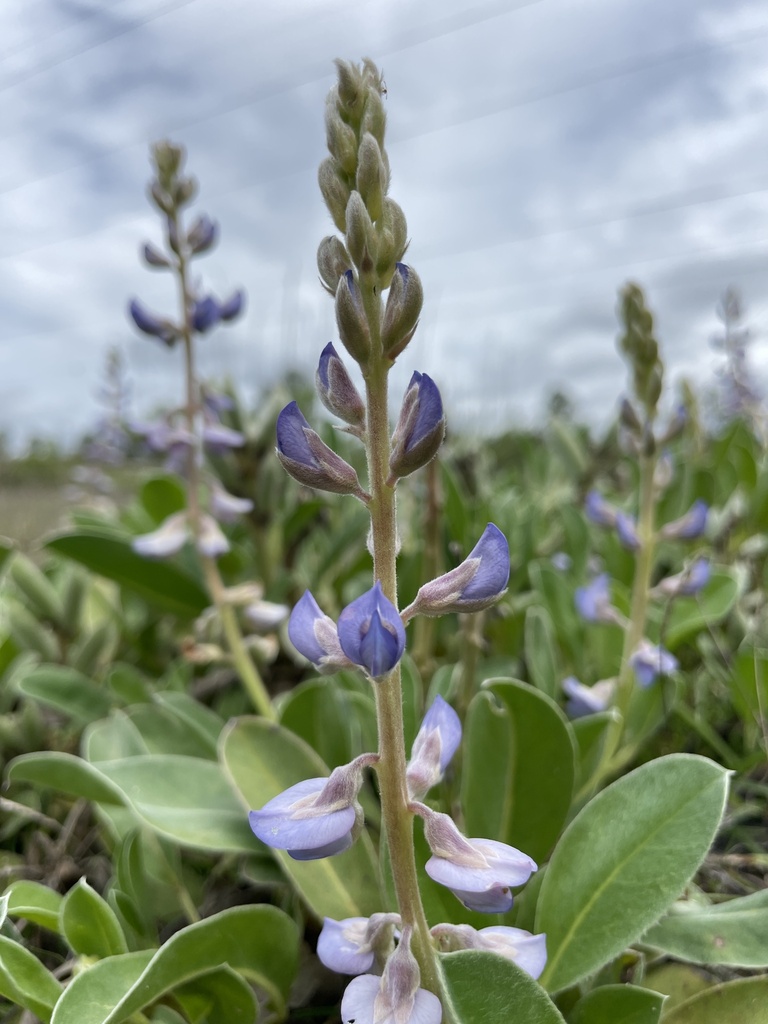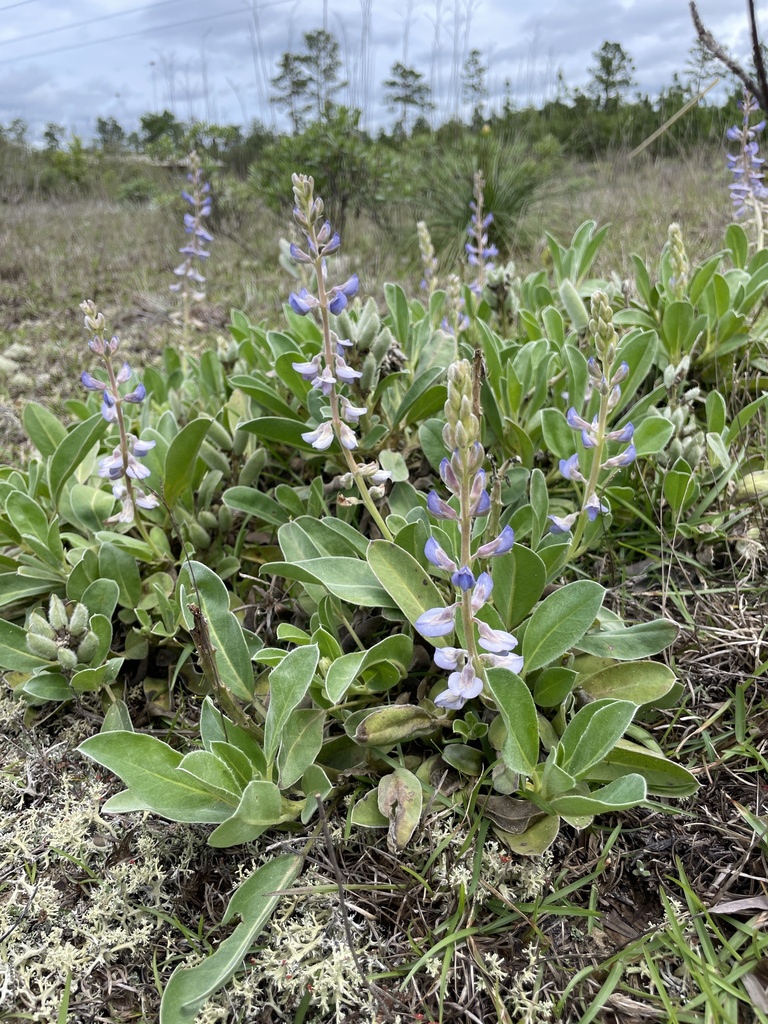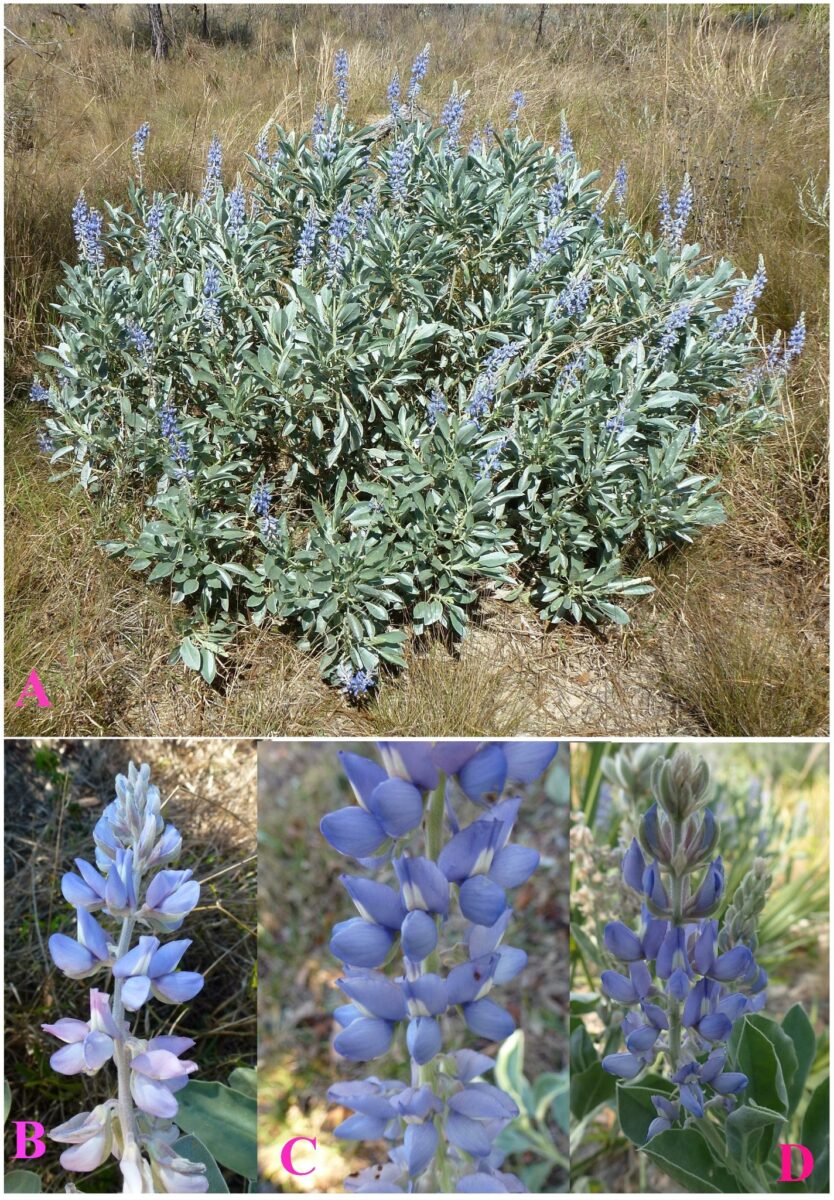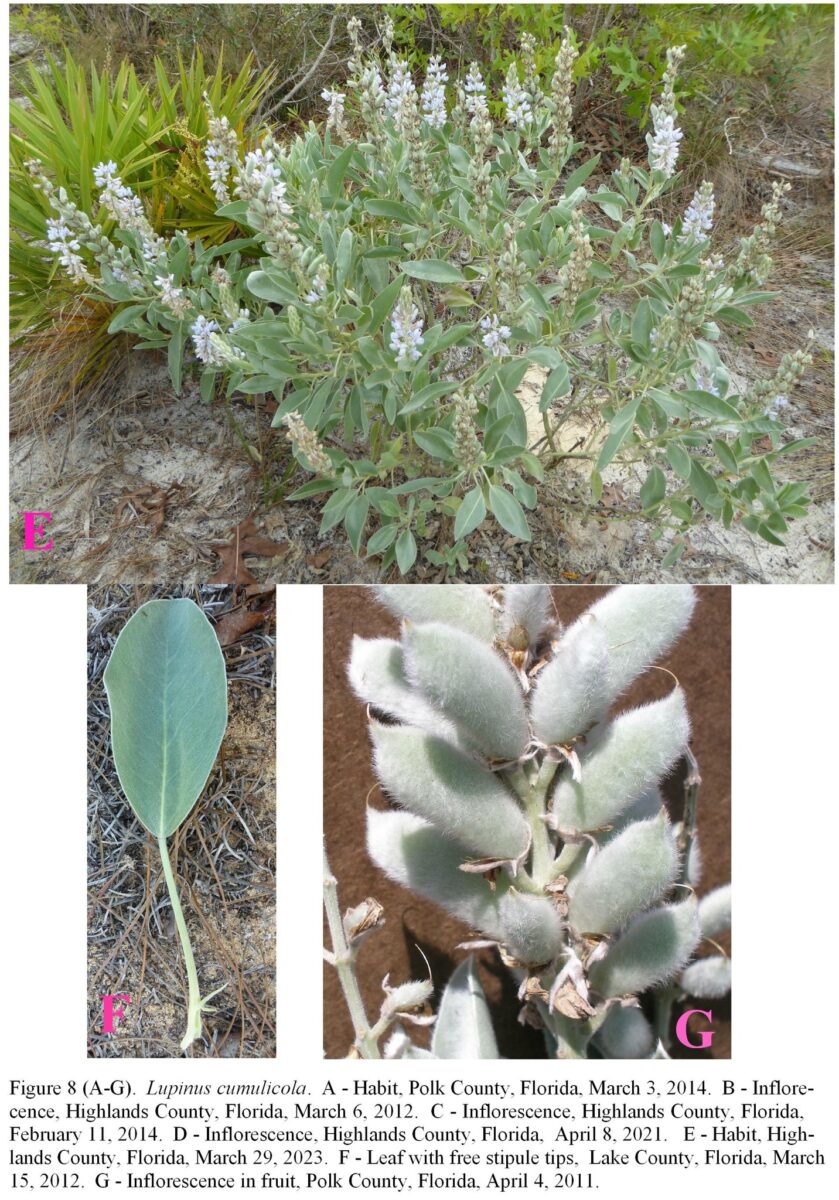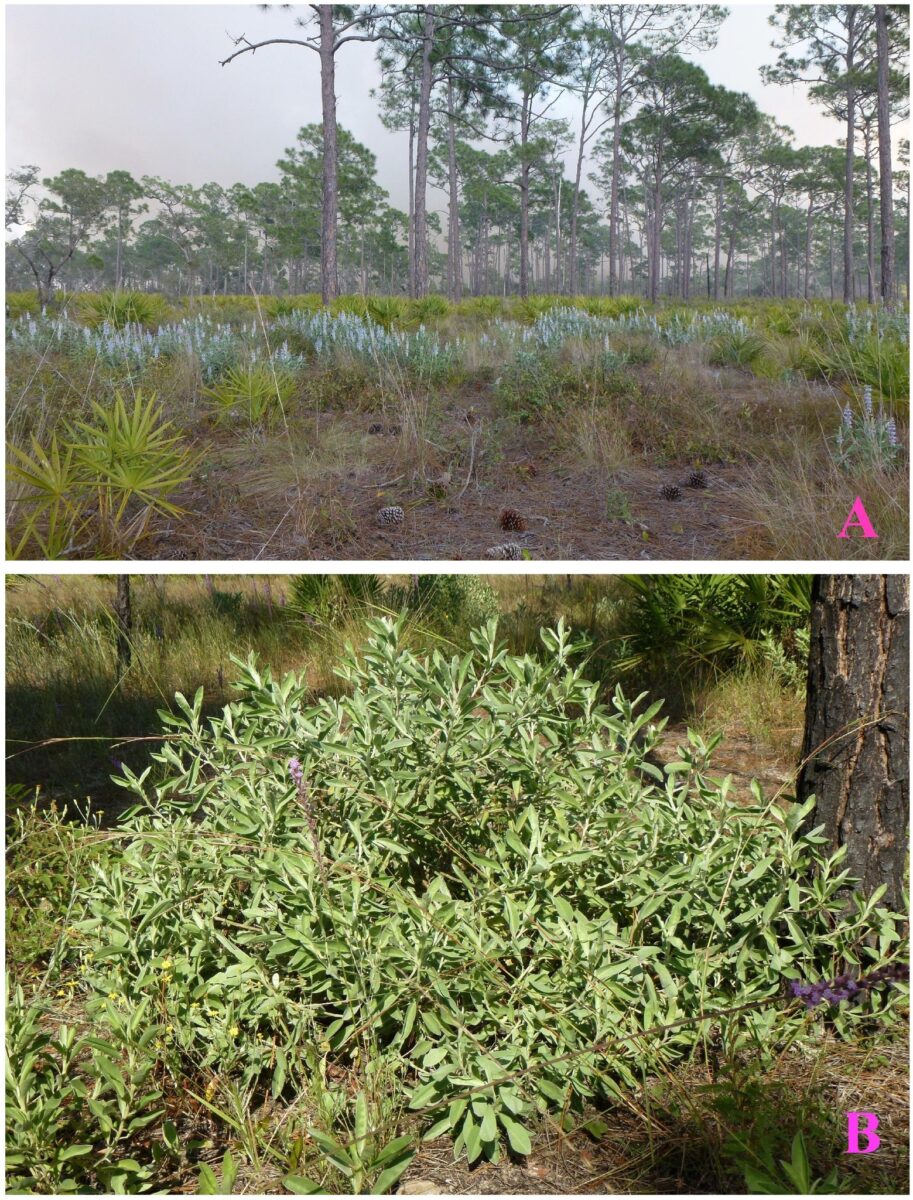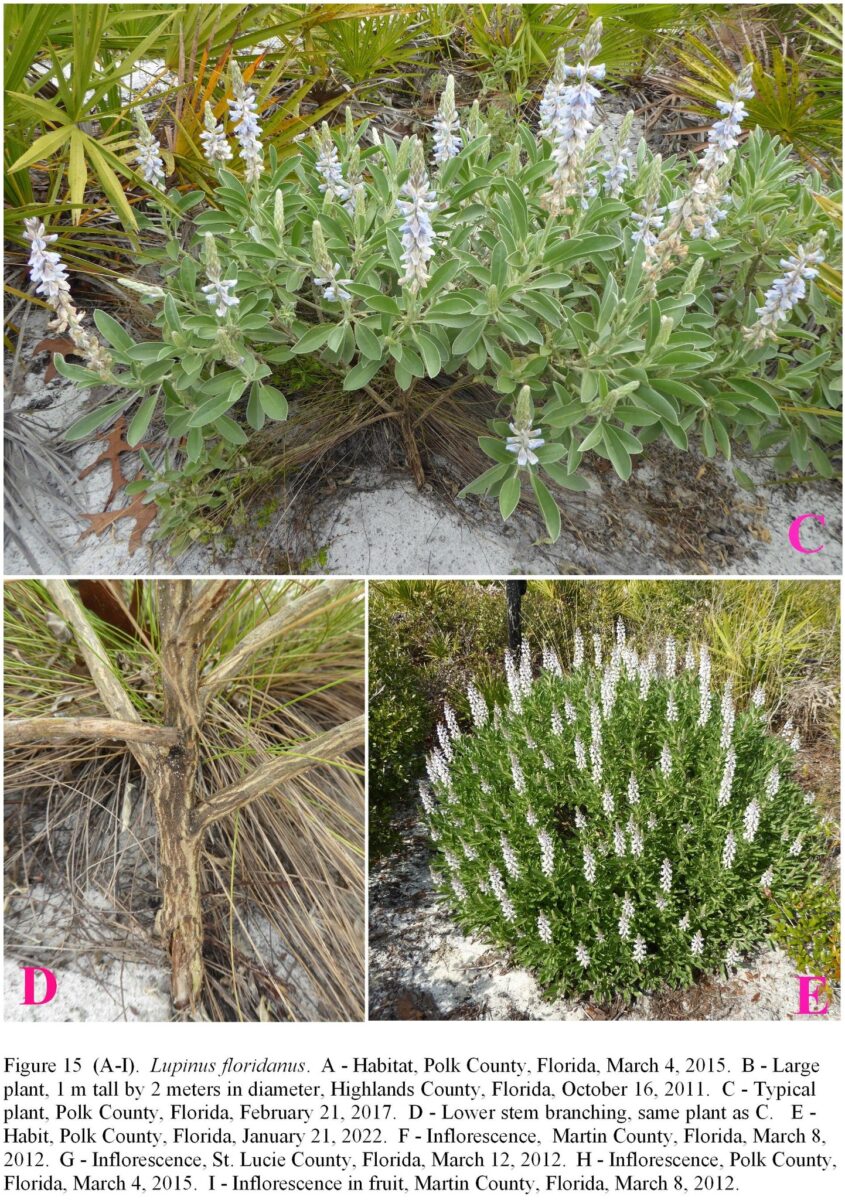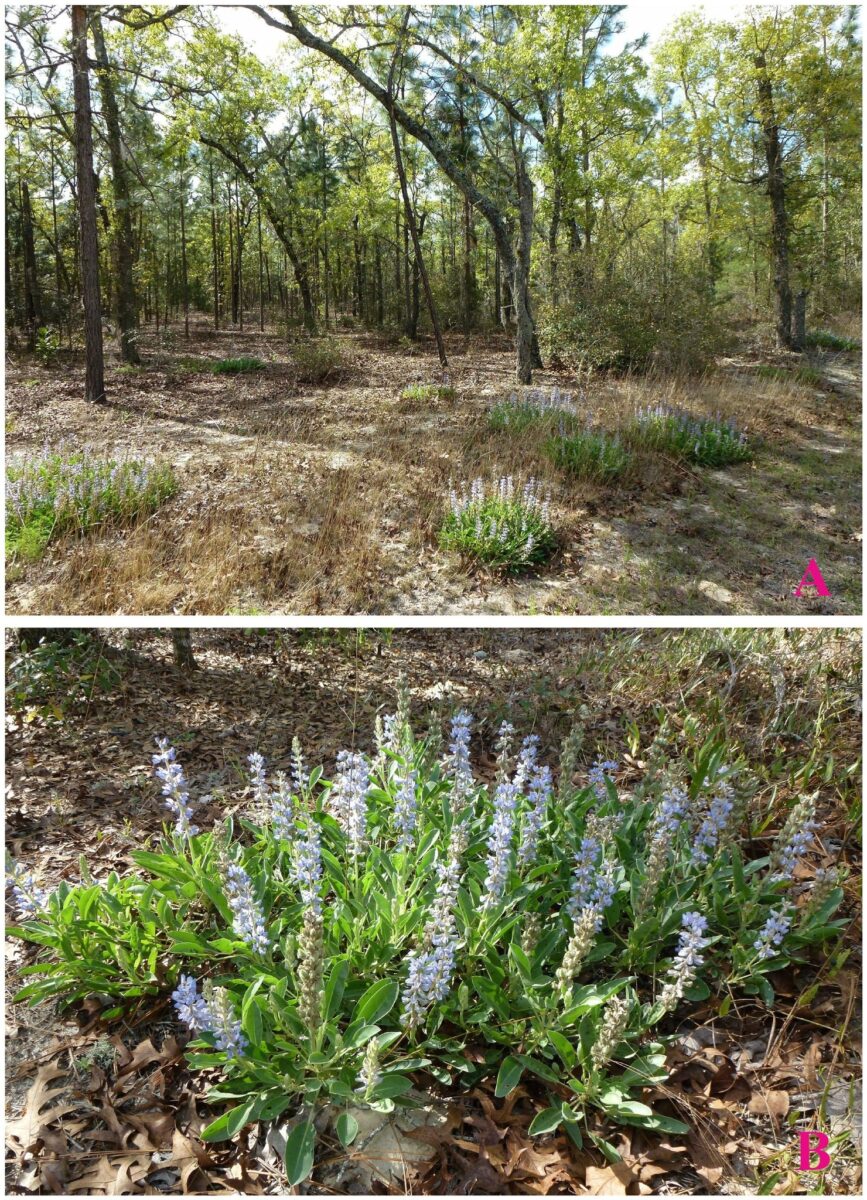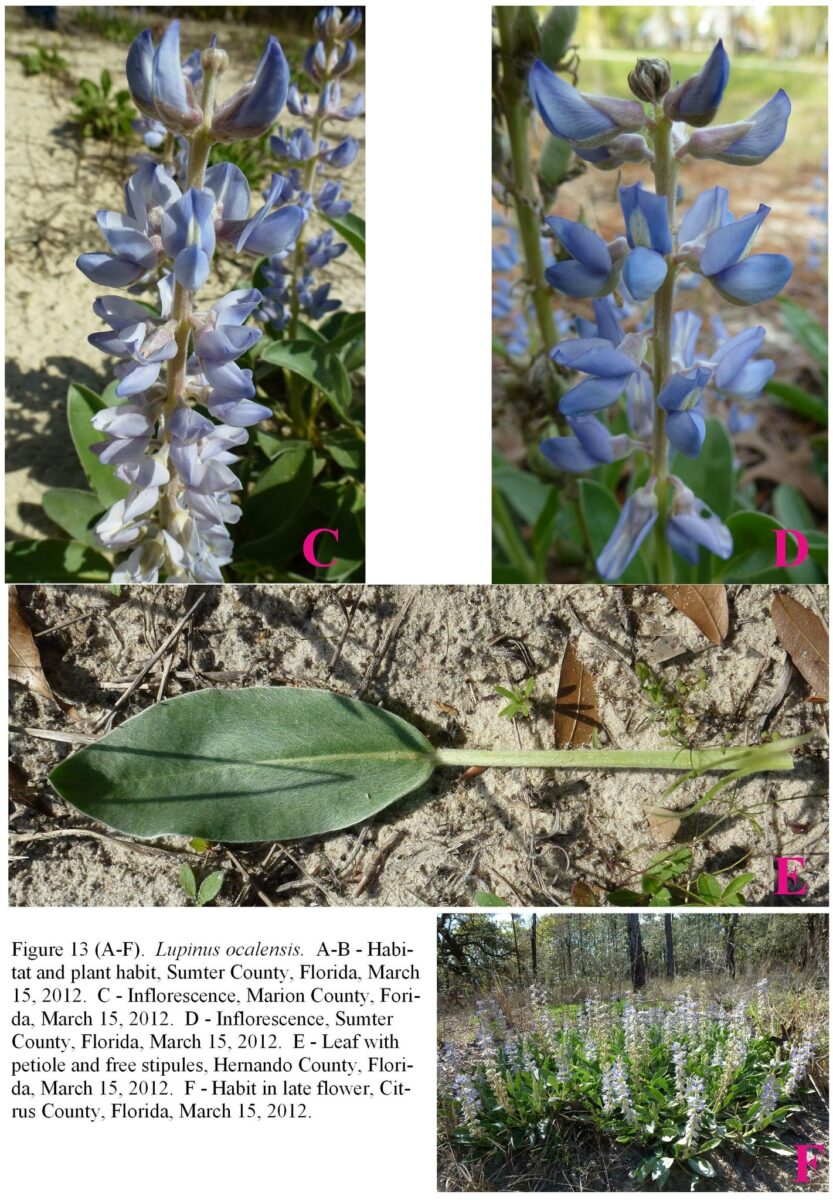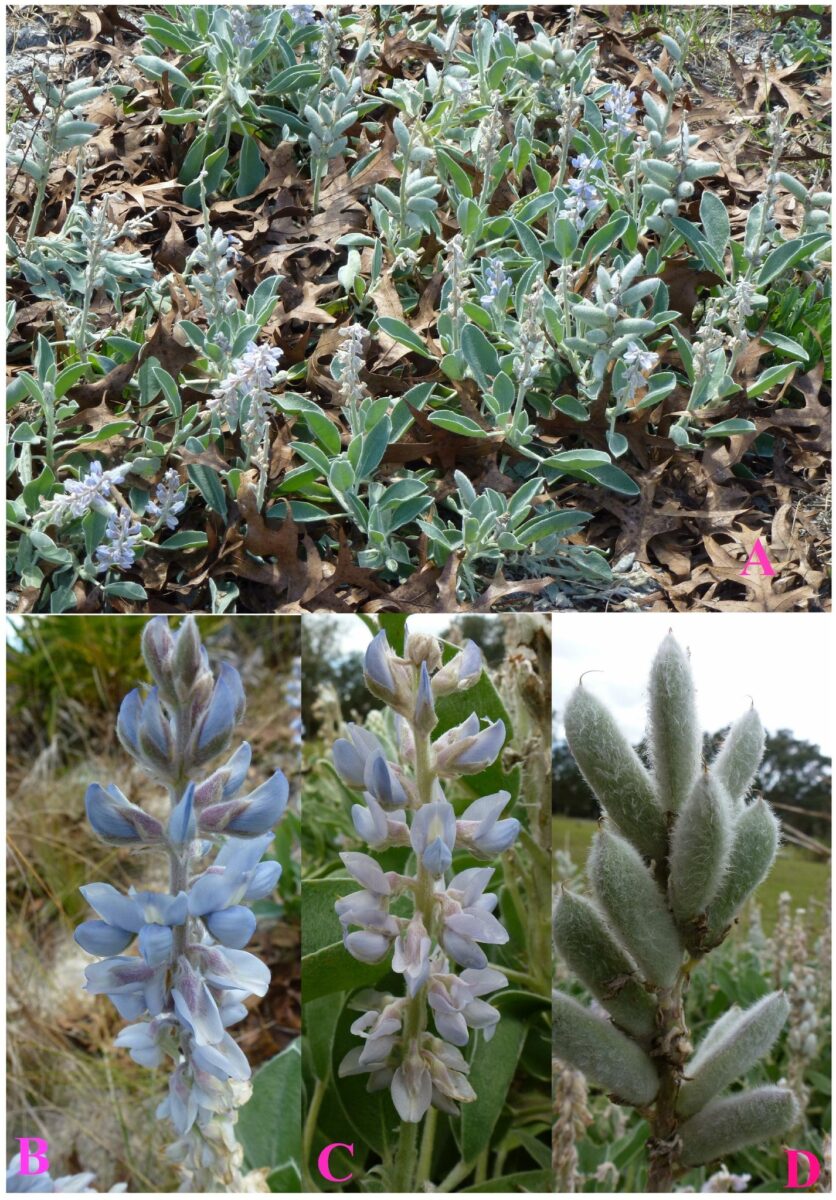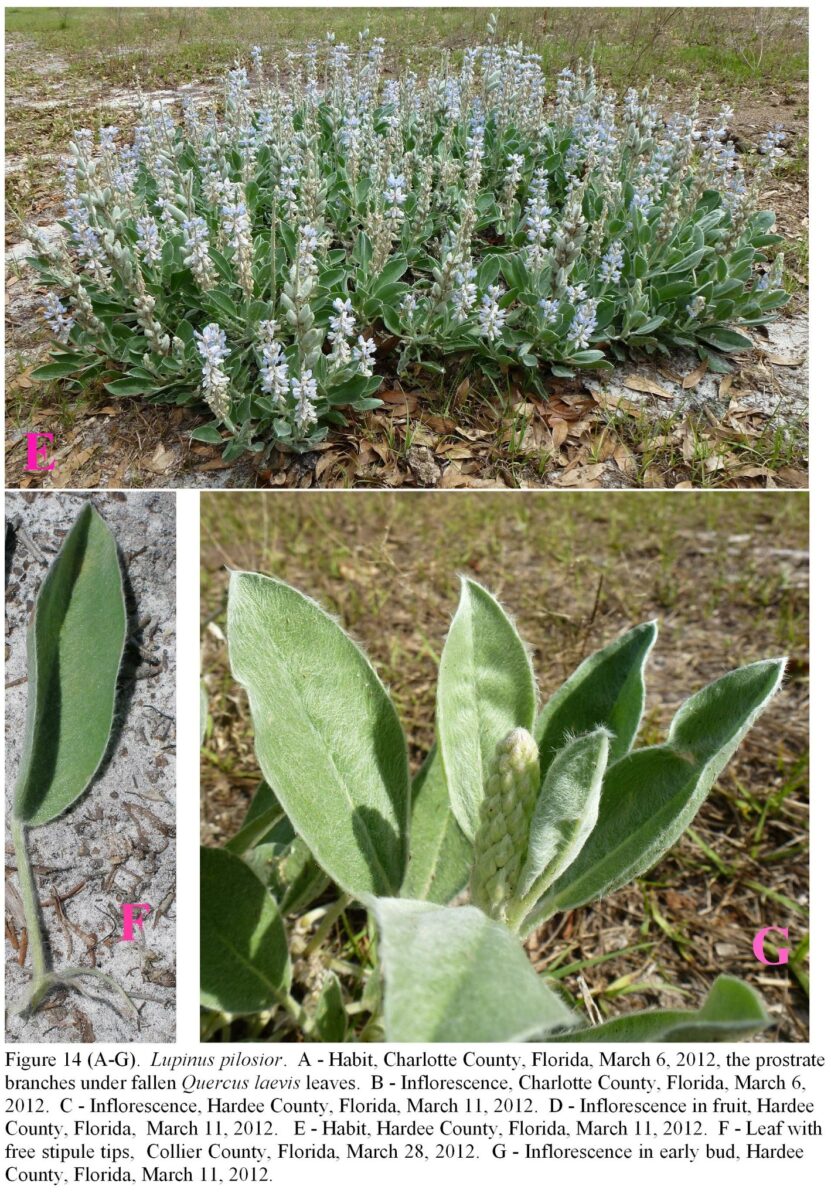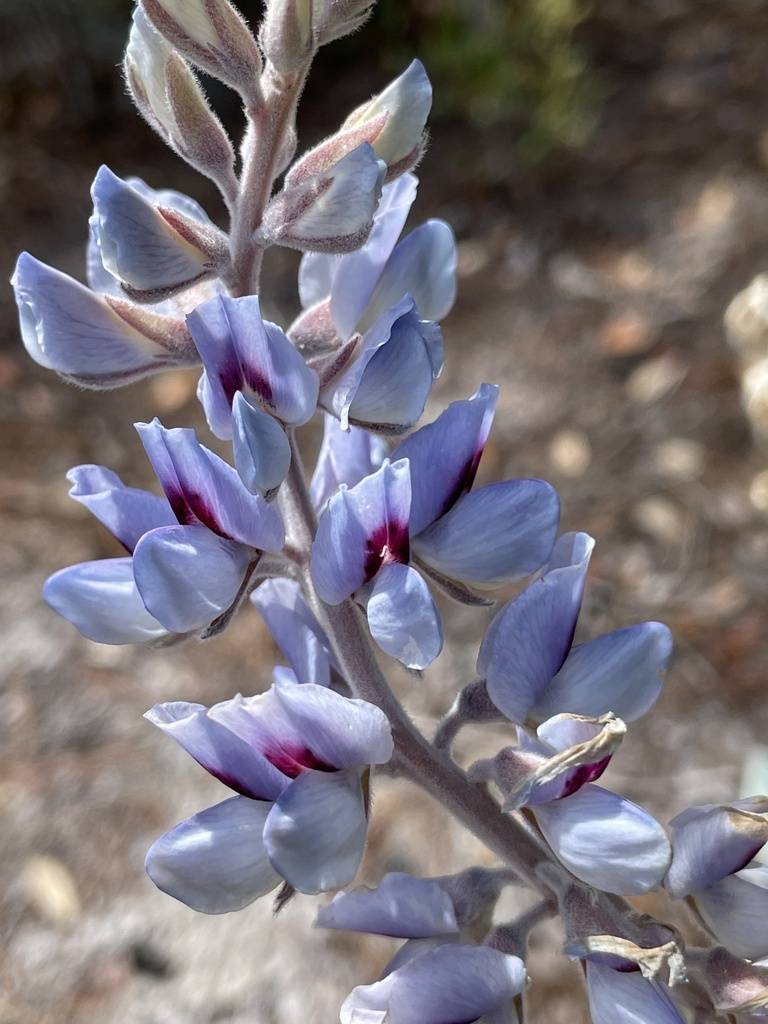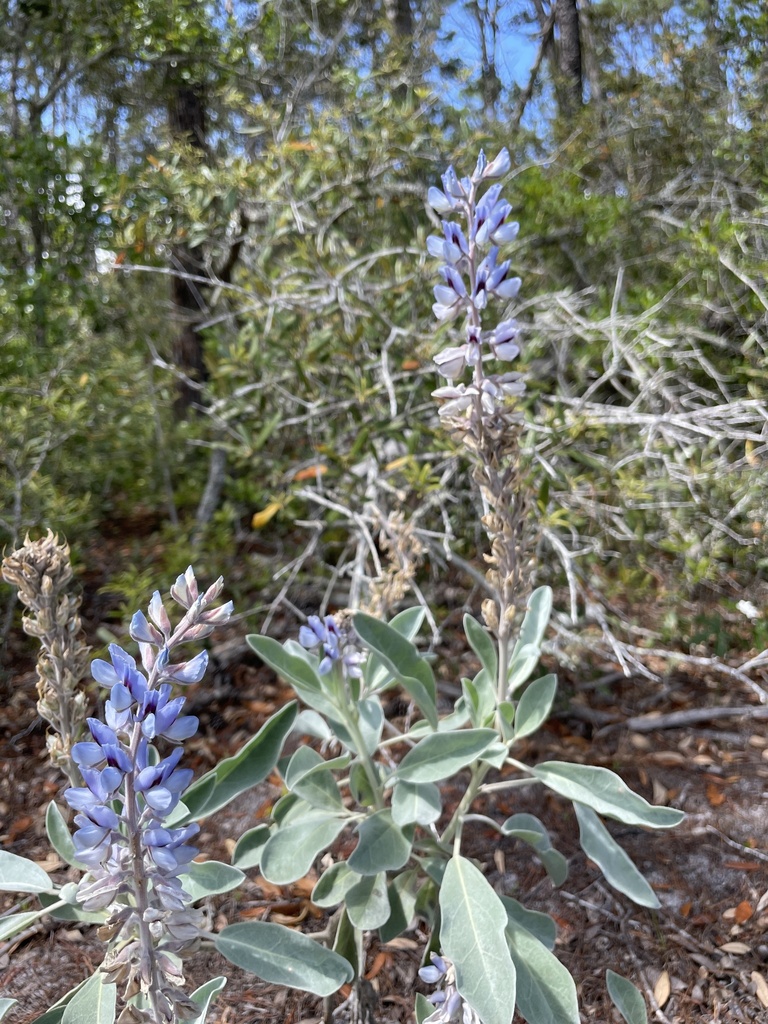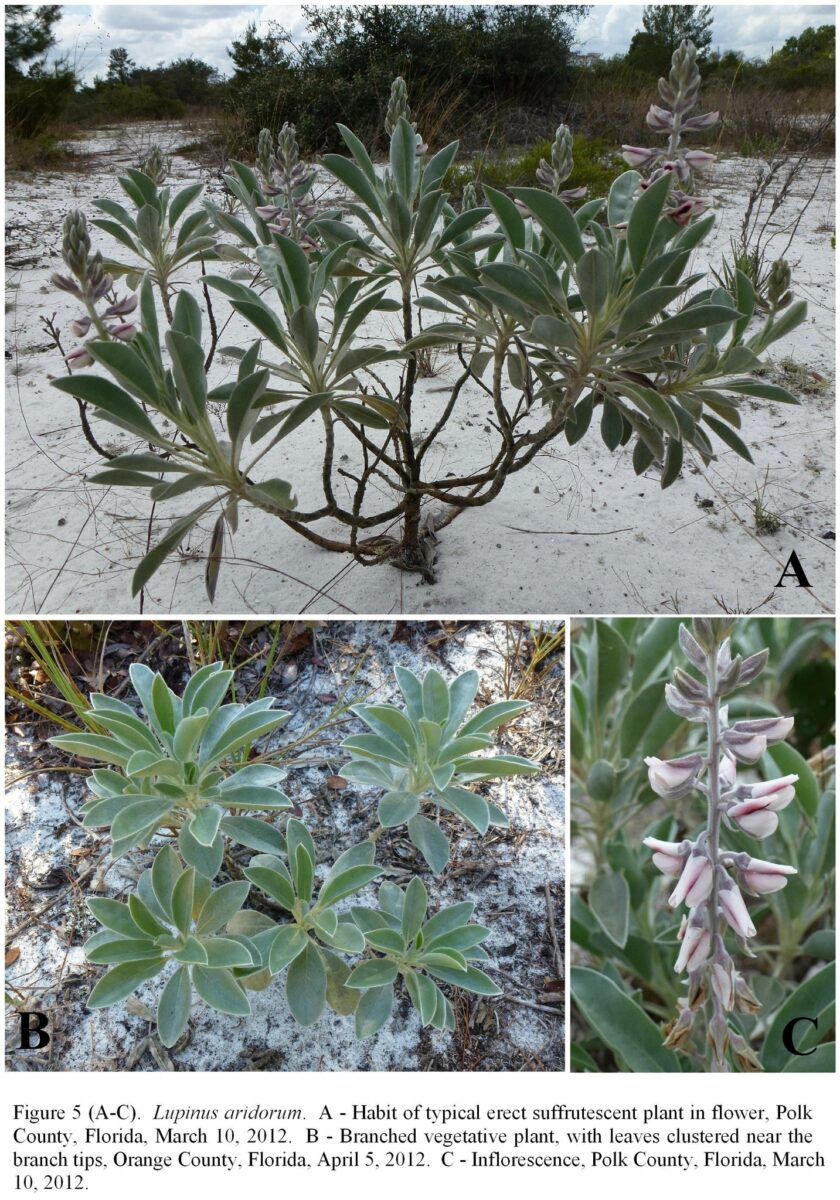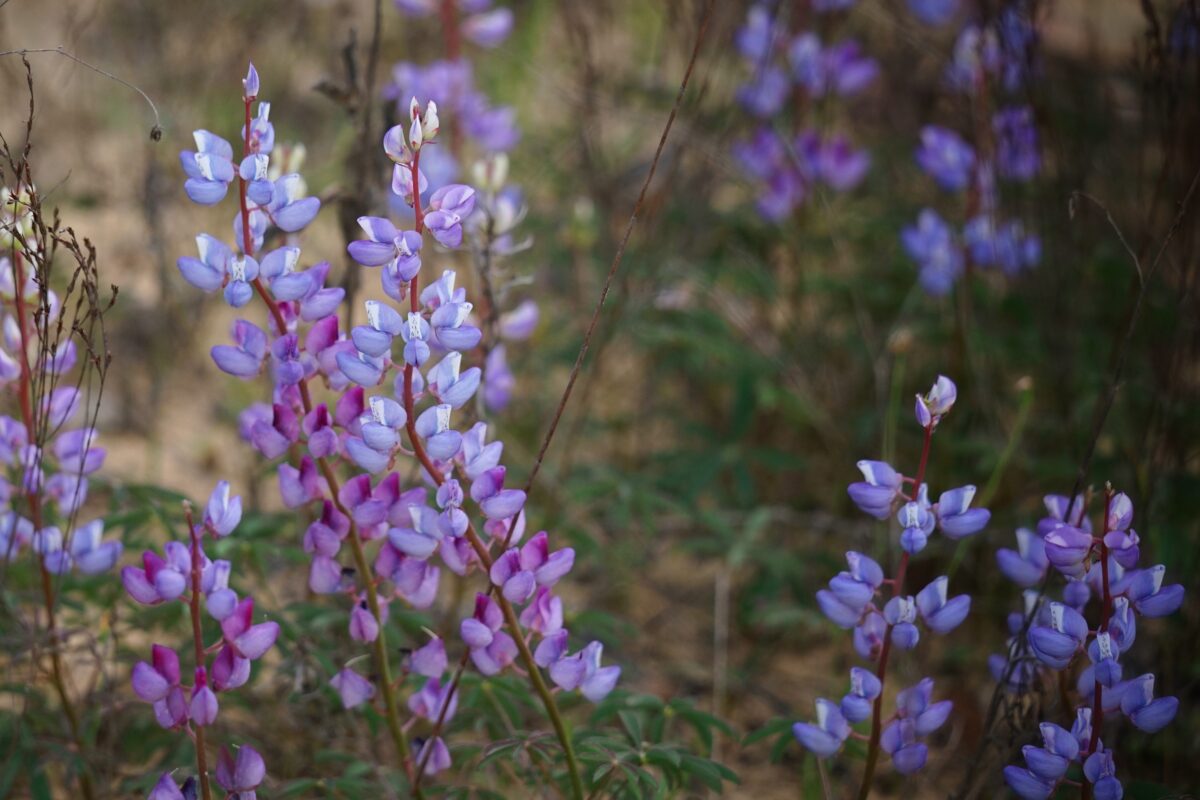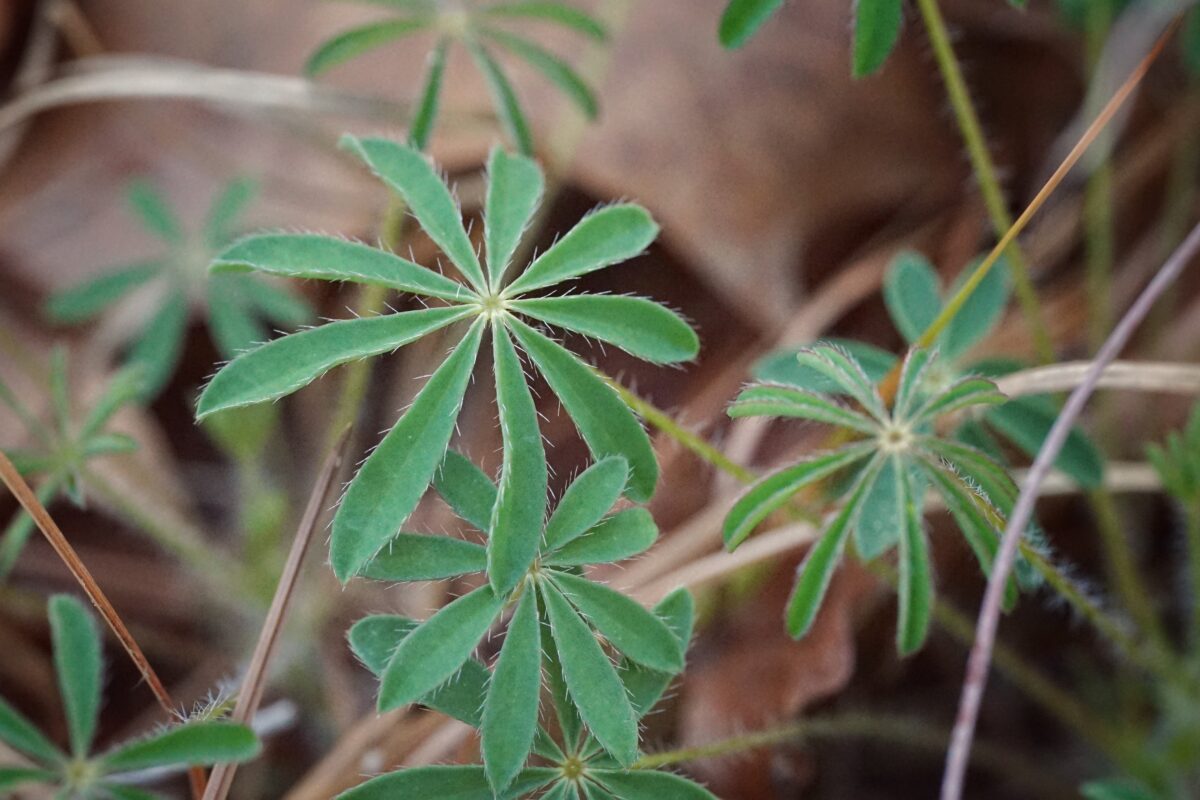Genetic research reveals rich diversity of lupines in Florida!
Pictured above: Lupinus floridanus taken by Emily Bell at the UF IFAS Deluca Preserve in Osceola County
Lupines (genus Lupinus) are well known wildflowers among both naturalists and gardeners alike. With well over 100 species native to North America, the large showy ones found in the Western US tend to garner the most attention. In fact, many people are surprised to learn that lupines are also found in the Southeastern Coastal Plain, and that Florida has many native species, including a few endemics. Recently, that list of endemic species has grown!
New discoveries
In a newly published study over a decade in the making, researchers have defined three new species within Florida’s unifoliolate lupines and found further evidence supporting the naming of two previously described species that have not been consistently recognized as separate. In this study, Edwin Bridges, botanical consultant, and Steve Orzell, a botanist at Avon Park Air Force Range, utilized RADseq data to support the naming of new species of lupines in Florida that had been hypothesized as distinct based on their morphological and geographic differences.
What makes Florida a hotspot for endemic lupines?
The answer to this question lies in our geography. Florida’s lupines are found in xeric landscapes, which occur throughout the state. Due to millions of years of dynamic shifts in water levels, Florida has a series of xeric sandhill ridges that were isolated over time, allowing for distinct species to emerge. This pattern is present in many Florida plant genera including Dicerandra and Trichostema.
Recognizing unique species is critical to conservation.
Unfortunately, Florida’s unique habitats, including our sandhills, sand ridges, and pine flatwoods face immense anthropogenic pressures from development, climate change and invasive species. Identifying endemic species is an important part of protecting them by making them eligible for both state and federal listing as threatened or endangered. Because our lupines are so closely tied to the conditions of the sand ridges, sandhills and xeric flatwoods, they are not suitable for cultivation and conservation through native plant horticulture. In the wild, they are short-lived and slow to germinate from their long-persistent seedbank unless they have just the right conditions. To ensure their survival, we must protect the natural areas in which they occur.
Let’s meet Florida’s lupines!
For more extensive information on the unifoliolate species listed here, reference the publication Systematics of the Unifoliolate Floridian Lupinus Clade.
Lupinus diffusus
Commonly called Skyblue lupine, it is found from southern Mississippi east through Southern Alabama, the Florida Panhandle, and eastern Georgia north to South Carolina and southern North Carolina. It occurs primarily in deep sands of oak-palmetto and pine flatwoods. The range of this species previously included similar looking plants throughout peninsular Florida; however, this recent research has separated out four distinct species: L. cumulicola, L. floridanus, L. ocalensis and L. pilosior, all of which were previously included in the broader definition of Lupinus diffusus.
Lupinus cumulicola
Endemic to Lake, Highlands, Osceola and Orange counties, it is nearly exclusively found on the Lake Wales Ridge. It was first described as a new species by American botanist John Kunkel Small in 1933, but had not been recognized as distinct in many references until recently.
Image figures courtesy of Systematics of the Unifoliolate Floridian Lupinus Clade, Bridges & Orzell.
Lupinus floridanus – NEWLY DESCRIBED
Endemic to the eastern half of Florida’s central and southern peninsula, from Seminole and Brevard counties south to Palm Beach County, and only east of the central ridges, it is found in scrubby pinelands and sandhills.
Image figures courtesy of Systematics of the Unifoliolate Floridian Lupinus Clade, Bridges & Orzell.
Lupinus ocalensis – NEWLY DESCRIBED
Found in from Hernando and Orange counties northward and possibly extending into Georgia, more genetic analysis is needed to determine the full range of this species. It occurs primarily in sandhill habitats.
Image figures courtesy of Systematics of the Unifoliolate Floridian Lupinus Clade, Bridges & Orzell.
Lupinus pilosior – NEWLY DESCRIBED
Endemic to West Central and Southwest Florida, from Pasco County south to Collier County, inland to Hardee and Desoto counties, and only west of the central ridges, it occurs primarily in sandhill habitats.
Image figures courtesy of Systematics of the Unifoliolate Floridian Lupinus Clade, Bridges & Orzell.
Lupinus westianus
Commonly called Gulf coast lupine, this species is endemic to the Florida Panhandle and is found primarily in coastal sand pine scrub from Franklin County west to Okaloosa County, and inland in a small region of deep sand in Washington and northern Bay counties.
Photos by Lilly Anderson-Messec from Franklin County.
Lupinus aridorum – NEWLY REASSIGNED
Commonly called Beckner’s lupine or McFarlin’s Lupine, prior to the research presented here, L. aridorum was often considered a subspecies of L. westianus. It is endemic to a very small area of Orange, Polk and Osceola counties and occurs primarily in scrub.
Image figure courtesy of Systematics of the Unifoliolate Floridian Lupinus Clade, Bridges & Orzell.
Lupinus villosus
Commonly called Lady lupine, this species occurs across the Southeastern Coastal Plain from North Carolina south to northern Florida and west to Louisiana. In Florida, it ranges south to Levy and Marion counties. It occurs most commonly in sandhills.
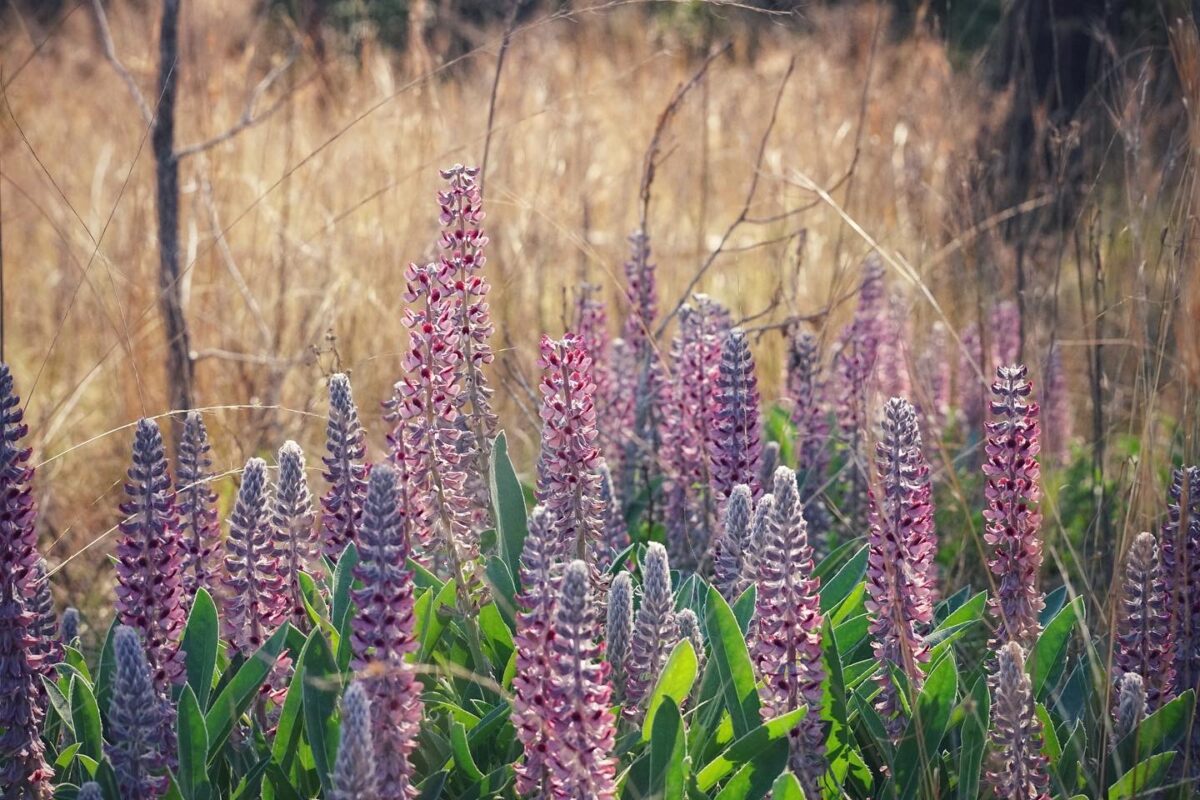
Lupinus perennis
Commonly called Sundial lupine, this is the only lupine found in Florida that has compound leaves (as opposed to the unifoliate species listed above). It has a wide range across the eastern US, and in Florida, can be found only in our northernmost counties from the Panhandle across to Clay and Nassau counties. It occurs in sandhills and pine flatwoods.

